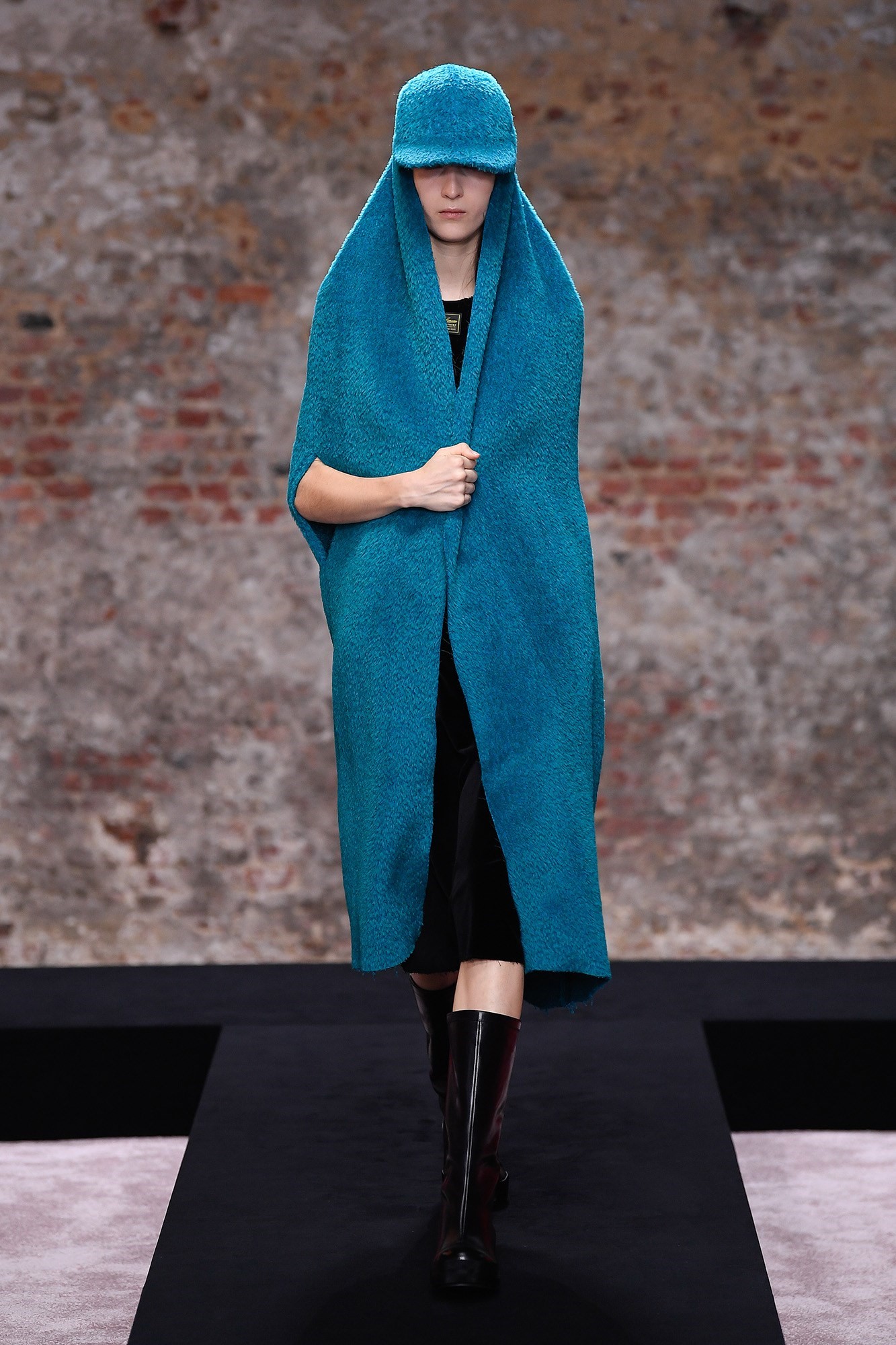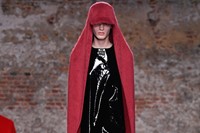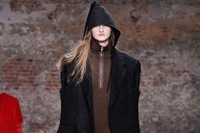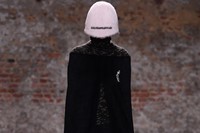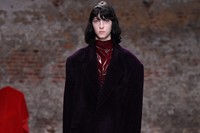Raf Simons has always been inspired by art. Fascinated with it, even. His collaboration with Sterling Ruby was wide-reaching, multi-seasonal, all-encompassing and even co-branded; he once staged a show among the sculptural artworks of the Gagosian Le Bourget in France, right by the private airport that allows arty oligarchs to private jet their favourite contemporary masterpieces straight out. His audience sat inside exhibition pieces during that show and, in Florence in June 2016, he put the exhibition on the clothes, curating a show of Robert Mapplethorpe pictures ‘framed’ within the construction of garments of his Spring/Summer 2017 collection.
But a mid-16th-century painting by Pieter Bruegel the Elder – the inspiration for Simons’ Autumn/Winter 2022 collection, unveiled digitally on Monday – seems well outside even Simons’ wheelhouse. That is unless you factor in that the work of the Bruegels – both Elder and Younger – inspired colours and headgear last season, and his final haute couture collection at Dior in 2015 swooped through the garden of earthly delights painted by another Netherlandish master, Hieronymus Bosch. As with those examples, Simons’ inspiration is a sideways glance rather than a reproduction – a gesture, a swathe of fabric, a daub of colour. That colour was the main focus, it felt, especially when laid against slithery black patent – his opening look, a peaked cap and flapping cape in jolting blue, is already well-documented as a recreation of attire from Bruegel’s painting Nederlandse Spreekwoorden (Netherlandish Proverbs). But elsewhere, fabrics resembled richly painted canvases, while contrasts of bitter chocolate and putty, or toffee and tyrian purple, may have been pulled from the painting itself, its scramble of figures a catalogue of human folly.
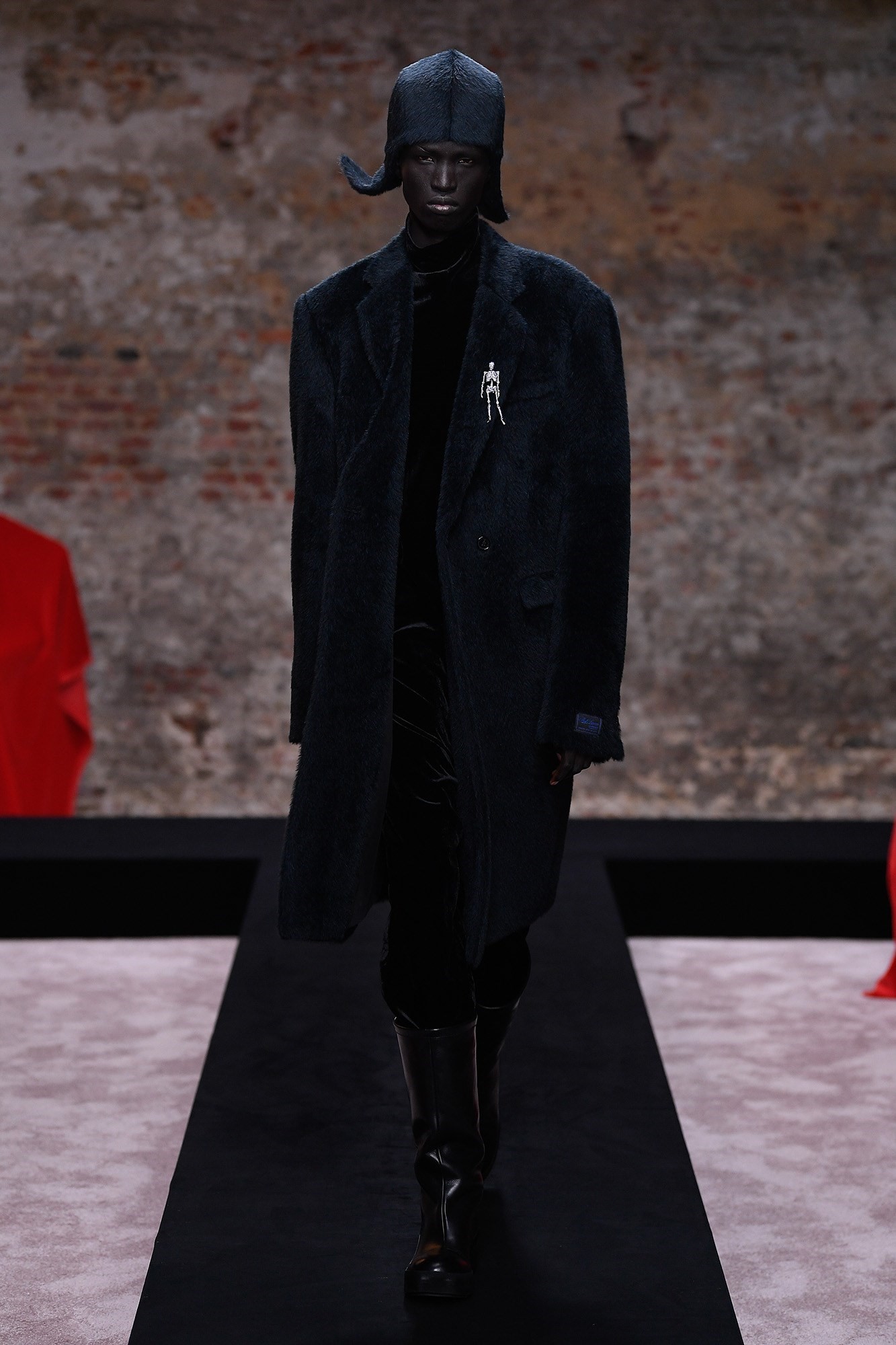
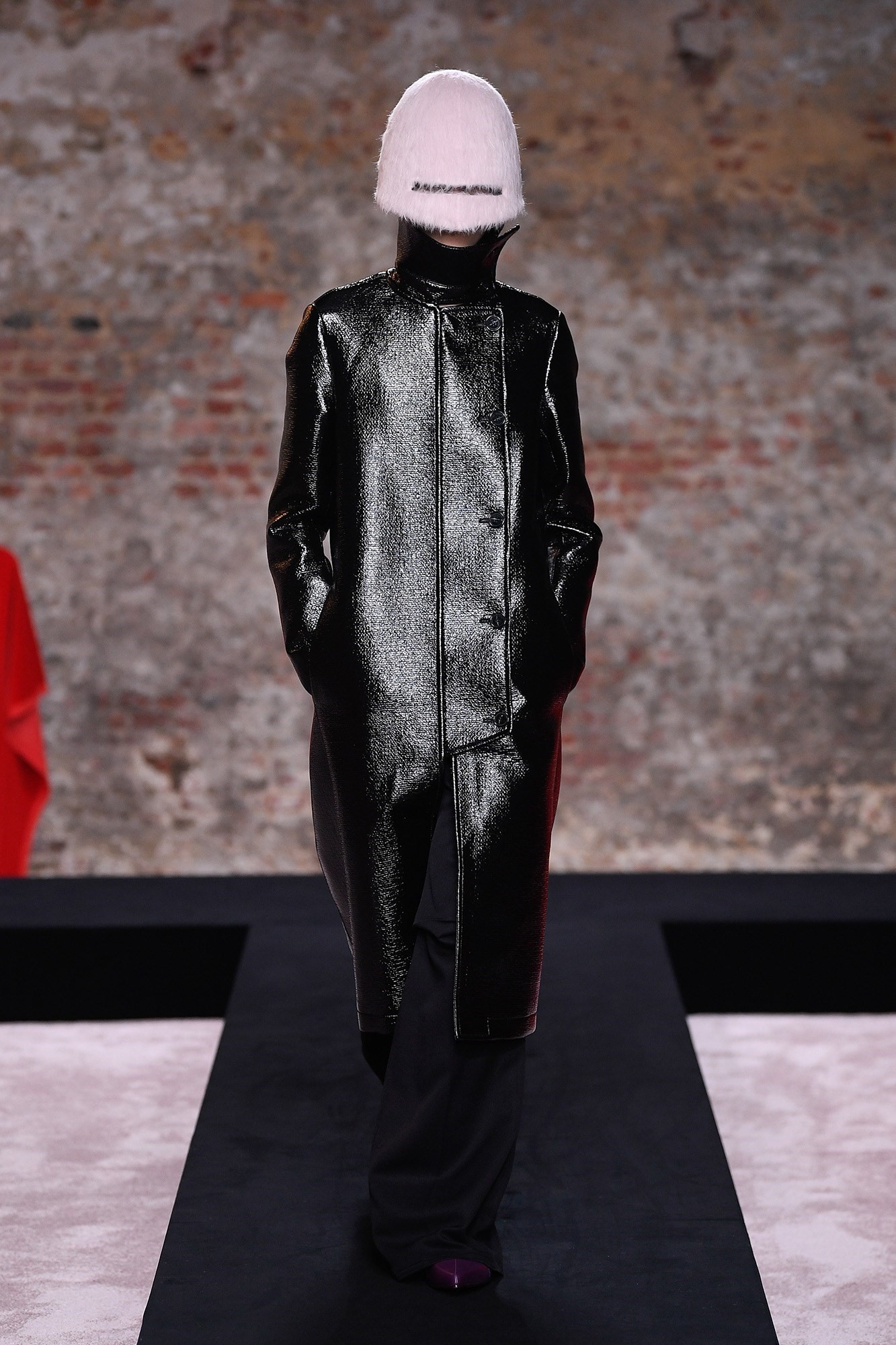
Simons has always been fascinated by people – youth, of course, has been a focus, cults and subcultures elevated, idolised and cemented in collective fashion posterity. But that reflects a wider interest than you’d perhaps first realise: he’s interested in how people live, how they feel. Adolescence shapes us, which is the root of Simons’ fascination. It’s about finding out what makes people who they are. So Bruegel’s depiction of humanity, flawed and glorious alike, ties to Simons’ tastes.
It also demonstrates his talent for stripping back an idea to its very essence – here, the forms of historic dress become almost outlines, their colours bright and resonant as if revitalised, reactivated. Stephen Jones created the millinery and I always remember him saying that, by the very act of putting something on your head in the first place you’ve made a statement. They were, perhaps, the most openly historic pieces in the Simons show: a neap cap with earflaps like a helmet, a hat called a chaperon – worn by Jan van Eyck in his 1433 self-portrait – with a trailing bit of cloth, called a liripipe, dangling off one side. There was also a great, squidgy, Laughing Cavalier-y beret (if you don’t mind me mixing my Masters even more) in a virulent, inflamed mauve. But look hard enough and you may see history elsewhere: a dress in mustard plastic reminded me of that famous green one in van Eyck’s Arnolfini Portrait, belling out from a high waist. There was a whisper of bygone ages in breeches tucked into boots, and in the brief capes applied to elongated bomber jackets, overcoats and trenches. Even the hard, contemporary sheen of the patent made me think, somehow, of light reflecting off a well-shellacked canvas.
Back to Bruegel. His painting illustrated proverbs, and that of the man in the bright blue cloak – echoed through Simons’ collection in more hooded hats – reflected the origin of the phrase “pulling the wool over their eyes.” Hood over head, see. But Simons has pulled the wool over our eyes too: the phrase made me think of how many historical references there are – always have been – in Simons’ clothes. Last season, his generous shirts recalled everything from medieval soldiers to 18th-century robes à la Française, with their free-falling sack backs. But, yes, they were to 21st-century eyes just shirts, cleverly cut, desirable, wearable. Just as Simons‘ great colours – he’s kind of a modern master, and its a rare talent – could evoke Bruegel or Yves Saint Laurent, whose work he adores. There is, generally, a telescoping together of histories that is compelling, difficult to untangle. It’s easy to do that kind of thing in a couture gown, but when someone shows urban, modern, relevant clothing that, somehow, reactivates raiments of history and makes them feel utterly of the moment, and alive again, it’s kind of exceptional.
